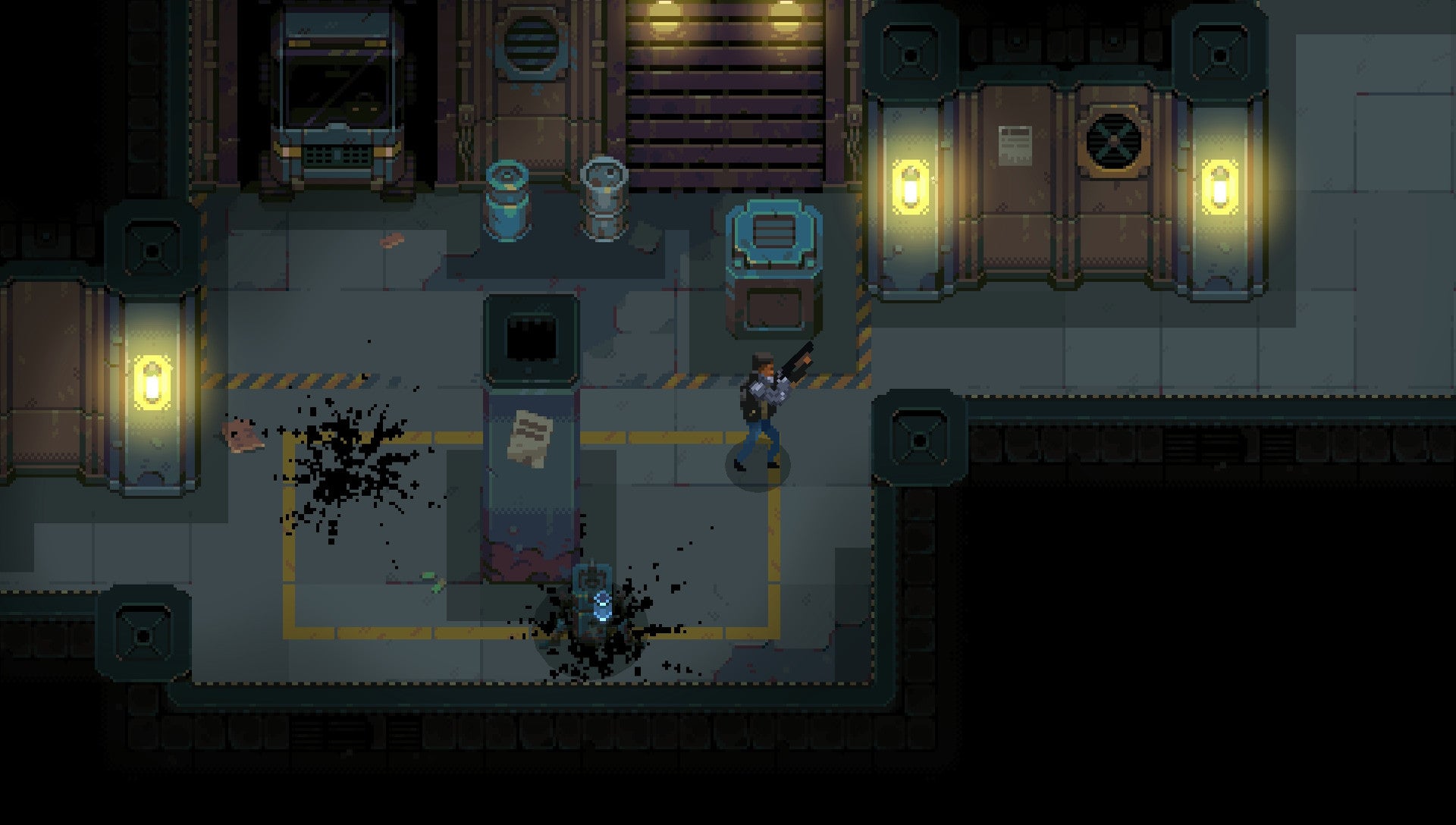There are touches, like those lovely clouds, that elevate Disjunction from being just another top-down, pixel-art stealth game with cyberpunky vibes, to something a little more. It’s the first effort from Ape Tribe Games, a tiny studio of three brothers based in New York, and it’s really quite good. You play as three characters, rotating between them as the action progresses and your stories intertwine, delving into futuristic underworlds and all the usual webs of lies. It’s familiar stuff, but it works well enough. There’s a criminal mystery for you washed-up P.I.s, ex-cons and hackers to get tangled up in, some gangs, some corrupt politicians, some mega-sized military corporations with double-barrel names and a spot of future-tech thrown in with it all. Exposition is a little lore-dumpy - as in, lots of long paragraphs and proper nouns - but Disjunction’s unusual kind of intentional slowness can make that pensive, text-heavy sort of thing work. What’s interesting is the element of choice, which gives a dash of light role-play to things and seems to have a pretty significant effect on the story. But frustratingly it’s a little hard to tell. It’s a common issue with branching stories, Ape Tribe are far from alone in running up against it, but Disjunction could’ve done with just a little more to indicate that what’s happening at a given moment is because of something you did, and not what would always be the case. Even a bit of different-coloured dialogue would help, for knowing when you’re making a choice of consequence. Still, it’s a nice idea and also not really what Disjunction is all about, anyway, which is instead its moody, oddly rhythmical kind of stealth. You can play Disjunction as an action game if you wish, bursting in with shotguns and grenades and the like, but I’d recommend you don’t. In stealth it sings, enemy grunts and guards and spinning robots rotating their way around a room in a kind of constant dance. You get four abilities whoever you’re playing with, mixed with a passive, a gun, and a melee attack. There is some mechanical nuance to it, but using abilities well often comes to timing, above all, success a matter of managing lines of sight, manipulating angles, lurking on corners, prancing through crates and drums. Stun grenades are fun, and little holographic decoy cats are smart, but ultimate satisfaction, I think, is most often found in the old ways, the agricultural method: waiting ages for someone to walk past and delivering a firm whack on the back of the head. In a way you can reduce Disjunction to that, but it works. Tension is managed deftly, your skills gated by a system of finite energy that you can collect from occasional enemy drops like ammo, and very limited pools of health, quick to drain and slow to top back up. Occasionally you catch yourself out, saving at a checkpoint on a sliver of health and having to toy between reloading a level from scratch, or stubbornly pressing on. Ominous synths waft and wave away in the background - it’s genre-typical, sure, but Dan Farley’s score is genuinely divine, and the in-between moments between missions often a highlight. Apartments are empty, thousands of feet up in the silence of the clouds, while the actual levels are usually deep in some other murky building’s bowels. It’s tense, but because of all the quietness and the whirring perpetual motion it’s also eerie, which combined makes for a magical vibe. Things can get a tad samey at times - although I’m sure this is partially because of my own penchant for the old sneak-and-whack combo mentioned above. The three characters’ abilities are relatively similar - the end result of a stun grenade, a smoke grenade, and a pulse grenade is all more or less the same, targeted sphere of cover for a rush - and giving the limitations on energy and health the melee head whack is genuinely your best option, almost all of the time - even when dealing with walking bots or spinning turrets. Disjunction’s best when you’re forced into tricky corners that require a spot of proper ability combination, darting in and out of cover or sliding between tiny slivers of space between multiple lines of sight, toying with using your last bar of energy for a tricky zap of your long-range stun, but you do have to force yourself to play it that way, when it can be a little too hard to balance your resources at times. Still, it’s all rhythm till the end: whack on the head, candyfloss clouds, spectral synth, hide. Repeat until 2049.


